I have 2 parts of code. Both of them process 1,5 million records, but the first part is taking 20 minutes and the 2nd part is taking 13,5 hours!!!!!!
Here is the 1st part:
loop at it_bkpf.
select * from bseg into corresponding fields of itab
where bukrs = it_bkpf-bukrs and
belnr = it_bkpf-belnr and
gjahr = it_bkpf-gjahr and
hkont in s_hkont.
if sy-subrc = 0 .
itab-budat = it_bkpf-budat.
clear *bseg .
select single * from *bseg
where bukrs = itab-bukrs and
belnr = itab-belnr and
gjahr = itab-gjahr and
hkont = wtax .
if sy-subrc <> 0 .
itab-budat = '99991231'.
endif.
endif.
append itab.
endselect.
endloop.
The 2nd part which is doing 13,5 hours is the following:
sort itab by belnr.
loop at itab where hkont(2) = '73'.
move-corresponding itab to itab2.
collect itab2.
endloop.
loop at itab2.
lv_5per_total = con_5per_tax * itab2-dmbtr.
lv_5per_upper = lv_5per_total + '0.02'.
lv_5per_lower = lv_5per_total - '0.02'.
read table itab with key belnr = itab2-belnr
hkont = wtax.
if sy-subrc = 0.
if itab-dmbtr between lv_5per_lower and lv_5per_upper.
itab-budat = '99991231'.
modify itab transporting budat where belnr = itab2-belnr.
endif.
endif.
endloop.
Does anyone have an idea on how to fix the 2nd part?
Some extra things:
it_bkpf has 1,5 million records.
After the 1st process ITAB has 1,5 million records.
In the 2nd part in the 1st loop I summ the amounts per belnr for the accounts that start with 73.
In the 2nd loop I compare the sum per belnr with the amount of the belnr/account and do what the code says.
Thanks
ADDITIONAL INFORMATION:
1st of all the initial code existed and I added the new one. ITAB existed and ITAB2 is mine. So the declaration of the tables was:
DATA : BEGIN OF itab OCCURS 0,
bukrs LIKE bseg-bukrs,
hkont LIKE bseg-hkont,
belnr LIKE bkpf-belnr,
gjahr LIKE bkpf-gjahr,
dmbtr LIKE bseg-dmbtr,
shkzg LIKE bseg-shkzg ,
budat LIKE bkpf-budat,
zzcode LIKE bseg-zzcode.
DATA END OF itab.
DATA : BEGIN OF itab2 OCCURS 0 ,
belnr LIKE bkpf-belnr,
dmbtr LIKE bseg-dmbtr,
END OF itab2.
After your suggestion I made the following changes:
types: begin of ty_belnr_sums,
belnr like bkpf-belnr,
dmbtr like bseg-dmbtr,
end of ty_belnr_sums.
data: git_belnr_sums type sorted table of ty_belnr_sums
with unique key belnr.
data: gwa_belnr_sums type ty_belnr_sums.
data: lv_5per_upper type p decimals 2,
lv_5per_lower type p decimals 2,
lv_5per_total type p decimals 2.
sort itab by belnr hkont.
loop at itab where hkont(2) = '73'.
move-corresponding itab to gwa_belnr_sums.
collect gwa_belnr_sums into git_belnr_sums .
endloop.
loop at git_belnr_sums into gwa_belnr_sums.
lv_5per_total = con_5per_tax * gwa_belnr_sums-dmbtr.
lv_5per_upper = lv_5per_total + '0.02'.
lv_5per_lower = lv_5per_total - '0.02'.
read table itab with key belnr = gwa_belnr_sums-belnr
hkont = wtax
binary search.
if sy-subrc = 0.
if itab-dmbtr between lv_5per_lower and lv_5per_upper.
itab-budat = '99991231'.
modify itab transporting budat
where belnr = gwa_belnr_sums-belnr.
endif.
endif.
endloop.
Now I am running in the background for 1,5 millions records and it continues after 1 hour.

